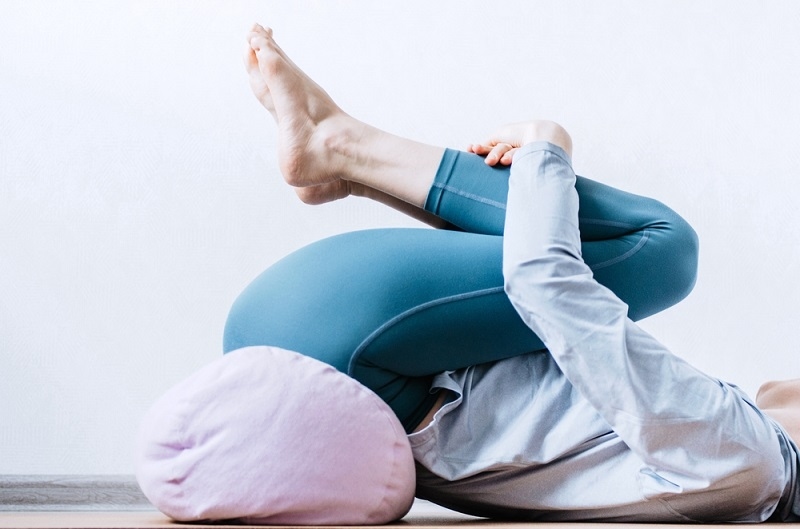
Imagine a yoga practice that moves very slowly and steadily; this is known as Yin Yoga. It is not about bending in impossible ways or trying to touch your toes as fast as possible. It’s about staying in poses, holding them, and letting the body settle. Yin yoga focuses on the deeper parts of the body—the joints, ligaments, and connective tissues. These are areas that usually don’t get stretched in fast yoga practices. If you’ve ever wondered, “What is Yin Yoga?” you are in the right place. Learning how to do Yin Yoga properly matters. Beginners can get the full benefits, like more flexibility, less stress, and better emotional balance. Yin yoga for beginners might feel simple at first, but the effects are subtle and strong.
Yin Yoga is different because you do not rush or force; you just need to hold and breathe. This is the reason guidance for beginners is essential to make sure they are able to perform the yoga safely.
You should begin with short hold times; for example, three minutes is enough at first. You can go longer later, but do not try to hold too long too soon. This is because the body adapts slowly, and that is absolutely normal.
Inhale deeply and exhale slowly. Keep breathing while you change your pose because breathing is a vital part of yin yoga. It relaxes the muscles and helps you go deeper without strain.
Consider using cushions, blankets, and blocks because they make it easier for you to have the right posture and ensure a comfortable feeling. As a beginner, you must use them.
Yin yoga is gentle, and it should not hurt. If you are feeling any kind of pain, stop at that very moment. It is essential to allow your body to release tension at its own pace.
It also helps to have a quiet, calm space with dim lights and soft music.
Starting something new is always a little tricky. Yin yoga for beginners may feel strange because sitting still in a pose for minutes can seem too slow. But with a few tips, it becomes easy and enjoyable.
The pace is slow because your body needs time to adjust to this. Patience allows muscles and joints to open naturally. Always remember that you should not rush.
Even a few minutes a few days a week helps, as you will notice that your flexibility will increase and the stress levels will go down. You will start feeling calmer and lighter.
Everyone has a body that is different. This is why you should not look at what others can do. Focus on your own experience because your body is unique in its own way.
Pick a time every day or every other day to make yin yoga a part of your everyday schedule. This is because consistency is essential for getting the best results.
These simple tips make Yin Yoga for beginners less intimidating. Over time, the practice will feel natural. You start to notice your body softening, your mind slowing, and your emotions settling.
Yin Yoga is slow, but its effects are anything but small. It can make changes to your body, mind, and emotions.
Yin yoga targets connective tissues, and over time, the joints move easier, muscles stretch more, and stiffness decreases. Even small daily improvements add up.
Holding a pose for minutes might seem boring at first, but it allows the mind and body to relax. The slow practice helps lower stress and gives a sense of calm.
Yin yoga is meditative. It clears thoughts and can release emotions held in the body. After a session, many feel more focused, calmer, and balanced.
The benefits show why Yin Yoga is more than exercise. It’s a practice that helps in everyday life. You feel looser, calmer, and more aware of yourself.

Knowing the poses is important. Each one has a role. Each one is held for several minutes.
Lie down and stretch your back to relax the body. It is a perfect way to start your yin yoga session.
This will stretch your hip areas and inner thighs. This is an effective way of increasing your flexibility.
Deep stretch for hamstrings and lower back because it helps you to release tension.
This is like a gentle backbend and helps your chest area to relax. This pose even strengthens your spine, because of which people refer to this as one of the easiest but effective poses.
Holding the poses for long periods of time is the key, and this is the exact reason experts suggest everyone be slow and steady.
Yin Yoga works best when it becomes a habit; even a short daily practice helps.
You can choose a time that fits your schedule because the results are good when done regularly.
Pay attention to your breath or meditate briefly because it can help you relax better.
Regular practice improves flexibility, reduces stress, and calms the mind.
Doing it daily or even several times a week builds benefits over time. Yin Yoga becomes more than poses—it becomes a pause in your busy life, a small moment for yourself.
Once beginners feel comfortable, they can explore more. Longer holds and slightly deeper poses are possible.
You should hold at least 10 minutes per pose; only then will it impact the deeper tissues and enhance your mobility.
Proper alignment is vital for avoiding discomfort or strain. This is why consistency is essential for the best results.
Even experienced practitioners keep it slow, mindful, and intentional. Yin Yoga is always about presence, breathing, and letting the body lead.
Yin Yoga is a slow and simple process, which can have some powerful impact on your body. Knowing what is Yin Yoga, how to do Yin Yoga, and trying beginner-friendly Yin Yoga poses can help anyone improve flexibility, feel calmer, and balance emotions. With practice, Yin Yoga becomes a moment to pause, breathe, and take care of body and mind.
This content was created by AI